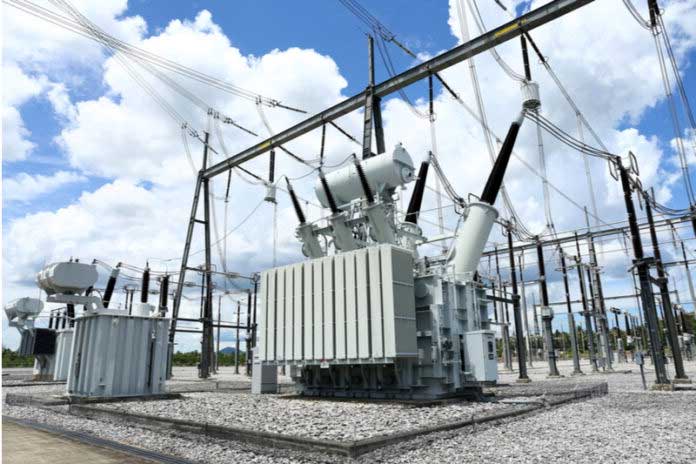All modern infrastructure, private households, industry, and other facilities of the 21st century demand the use of immense electrical energy. And this rising demand for complex power transmission is attended by high-voltage substations. They play a major role in meeting this demand reliably and safely.
An Electrical Substation is destined to be installed in order to set up appropriate levels of voltage for the production, conversion, regulation, and distribution of electricity. When they are adopted to execute high-voltage applications, they take charge of assisting the world in attaining impeccable benefits.
In this post, you will get a deep insight into the importance of high-voltage substations in the modern world.
How do the Substations Work?
A high-voltage substation or electric system infrastructure is meant to switch equipment, circuits, and generators in/out of the system. It is also required for changing the Alternating Current voltages from one specified level to another and changing the AC to DC or vice versa.
The major role of the substations is to convert electricity into diverse voltages. It is essential to make sure that the electricity can be potentially transmitted all across the country, specifically into buildings, businesses, and homes.
The substations, technically the high-voltage utility hubs, consist of specialist equipment that allows the electricity voltage to undergo transformation. As per the demands and supply, the voltage will either be stepped up or stepped down with the use of transformers.
The transformers are accountable as the powerhouse for substations, as they handle the transfer of electrical energy with the use of magnetic field changes. They have wire coils, probably two or more. Thus, the difference in the count of coil wraps around the core of the transformer is what would affect the voltage change.
Thus, this is what allows the voltage to either rise or drop, depending on the needs. The high-voltage substation transformers follow the same working approach but deal with escalated voltage on priority. Considering that, these substations can fulfil diverse purposes with the rate of voltage conversions.
Why are High-Voltage Substations important?
Some of the benefits that express the importance of high-voltage substations in a more proficient manner are:
1. Reduction in the Power Loss Rate
All the power obtained from traditional sources, such as coal-fired facilities, is produced in locations that are far away from the main cities. Such power plants are constructed in areas that are highly rich in specific resources for creating the required power. But that comes up with the need for transporting this power across long distances before being utilised.
The use of high-voltage substations for transmitting power eradicates this problem. It is because, as the voltage is high, the amount of power loss during the transmission will be reduced. You must know that wires of all sizes come with specific levels of resistance, especially aluminium or copper wires.
Over great distances, when these wires come to use, the level of resistance multiplies exponentially, and the power loss rate increases. Therefore, setting high-voltage substations for transmitting power is one of the efficient ways to reduce the rate of losses. Scaling the voltage of electricity implies that you can reduce the current, and the equal rate of power can then be transmitted with fewer losses.
2. Lowered Infrastructure Expenses
As you know, the size of transmission cables used in power production facilities is directly proportional to the rate of current intended to pass through them. In such cases, when the power is intended to be transmitted at escalated currents, bigger-sized wires are required. But, with the setup of high-voltage substations, the size of the cables required for transmitting will be smaller, as low currents are intended to pass through them.
When the power is being transmitted across farther distances, somewhere around 100 or 1000 km, the cabling costs gradually increase, which adds up to the overall cost of transformers for substations. So, the required size of the cabling matters a lot when you tend to look out for ways to minimise the overall infrastructure expenses.
Setting up high-voltage substations and making use of thinner wire gauges will turn out to be more reasonable for all the infrastructure suppliers and power producers. Not only that, but the end-consumers who intend to avail themselves of affordable electricity will also find it an ideal decision.
Conclusion
This is a clear depiction of how high-voltage substations have helped energy providers improve their supply of power and electricity to the modern world. HARTEK is one of the top service providers that can help you install 400+ HV & EHV substations to attend to your power distribution projects all across your respective country.
Connect with us today to know more about how we blend in technology, platform, and process together to deliver you an astounding high-voltage substation.
FAQs about High-Voltage Substations
1. What is a high-voltage substation?
A high-voltage substation transforms electricity to suitable voltages for safe transmission and distribution.
2. How do high-voltage substations reduce power loss?
They increase voltage and reduce current, which minimizes energy loss during long-distance transmission.
3. Why are transformers essential in substations?
Transformers adjust voltage levels by using coil configurations to step up or step down electricity.
4. How do substations lower infrastructure costs?
Higher voltage transmission requires thinner wires, reducing the cost of cables and overall setup.
5. Where are high-voltage substations typically used?
They’re used in industries, cities, and remote power plants for efficient electricity distribution.
Share:
Explore More
Keep up-to-date with the most trending news stories that are shaping the world today.







